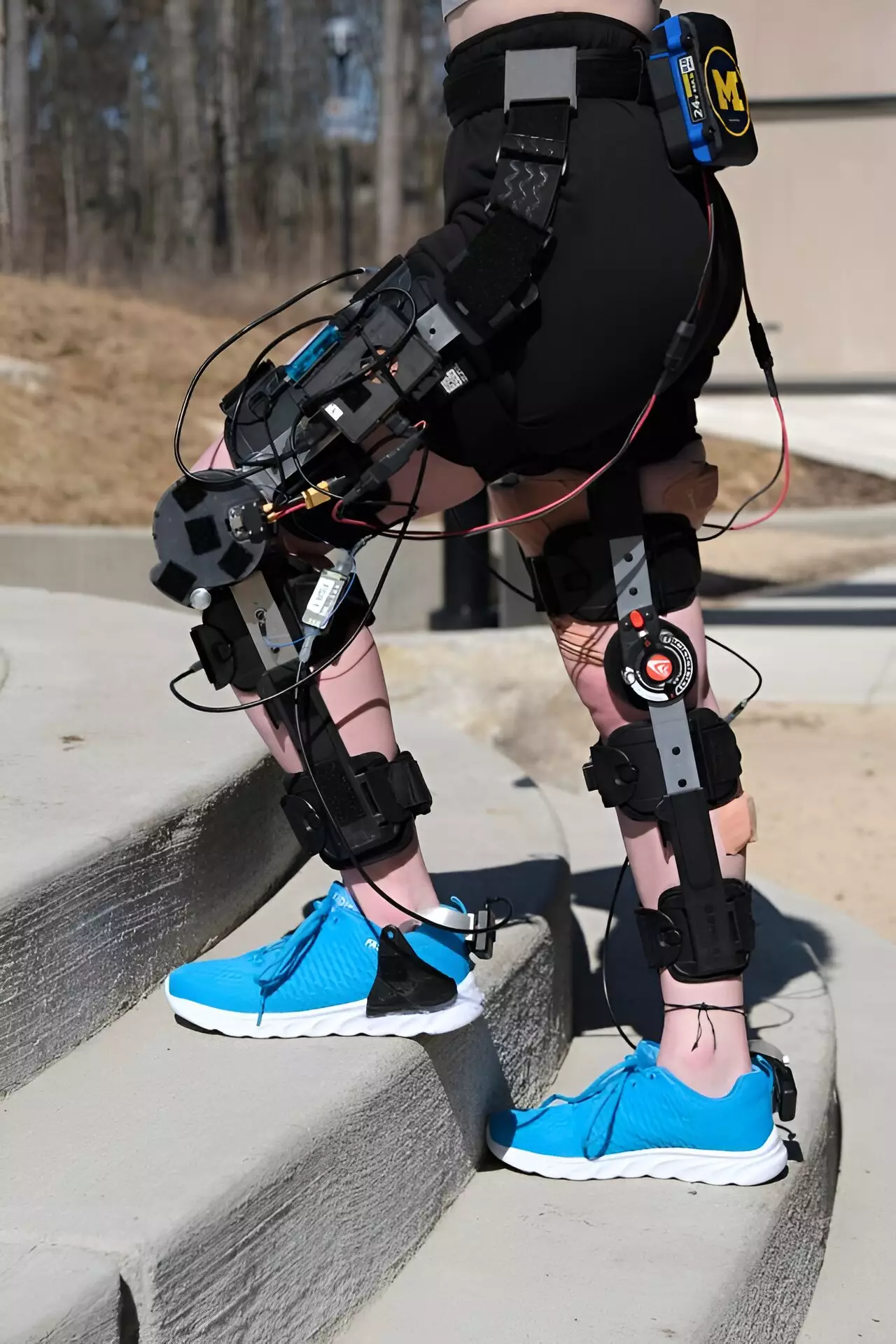In an era where workplace safety is paramount, researchers at the University of Michigan are innovating wearable technology designed to enhance the lifting capabilities of workers, particularly in physical labor settings. The focus of their research centers on a new type of knee exoskeleton, which combines commercially available knee braces and drone motors, showing promise in reducing fatigue during lifting tasks. This innovative approach not only addresses the physical demands placed on workers but also aims to mitigate common injuries associated with strenuous activities, such as those experienced in construction and manufacturing.
Traditional heavy-duty solutions like back braces have long been part of the protective gear for laborers. However, they often provide support in a manner that can inadvertently encourage improper lifting postures. In contrast, the knee exoskeleton developed by U-M researchers shifts the focus from the back to the legs, particularly aiming to bolster the quadriceps. According to Robert Gregg, a robotics professor at the university, enhancing leg strength during lifts allows for safer and more efficient lifting techniques. By maintaining proper posture with effective support, these exoskeletons redefine the approach to worker safety and ergonomics on the job.
In a controlled study, participants donned the knee exoskeletons while performing a series of lifting and carrying tasks with a 20-pound kettlebell. Tasks included lifting from the ground, as well as navigating inclines and stairs. The results were compelling; participants exhibited improved posture and significantly reduced fatigue. Remarkably, they maintained their lifting speed to within 1% of their pre-fatigued pace, while those not using the exoskeleton fell to 44% slower speeds. The implications are clear: aiding the quadriceps can lead to enhanced performance efficiency while preserving safety standards, particularly in fast-paced work environments such as assembly lines.
Participant feedback corroborated the effectiveness of the technology, with high satisfaction levels reported, demonstrating that they felt well-supported during lifting tasks. However, a slight disparity was noted during walking on level surfaces; the level of aid provided was marginal for the more straightforward movements, resulting in mixed feelings about the exoskeleton’s performance in that context.
An innovative aspect of this knee exoskeleton lies in its design, particularly the sophisticated motor systems and the intelligent software controlling it. High-velocity measurements of knee joint angles and limb orientations allow the exoskeleton to adapt in real-time to the user’s movements. This adaptability is vital, as typical exoskeleton controls can struggle to transition effectively between tasks, often requiring a moment to recalibrate when facing unanticipated changes. By utilizing a combination of physics modeling and machine learning, the Michigan team has engineered a system capable of preemptively determining the user’s intended actions, ensuring fluidity and responsiveness that enhance usability.
The initial prototypes of the knee exoskeleton come with a price tag of approximately $4,000, which, while expensive, could be reduced to around $2,000 with mass production. This financial aspect raises important questions about broad accessibility for workers who could benefit from such enhancements. As the research team seeks patent protection and potential commercial partners, the pathway to market is becoming clearer. With strategic support and development, these knee exoskeletons could become a common feature in workplaces across various sectors, heralding a new era in occupational health and safety.
The introduction of knee exoskeletons presents a transformative opportunity to improve workplace safety, particularly for those engaged in physical labor. By focusing on enhancing quadriceps strength, these devices could substantially reduce the risk of injuries while ensuring that workers maintain proper posture during lifting tasks. The research from the University of Michigan illustrates not only the innovative use of technology in solving real-world problems but also underscores the importance of ergonomics in our evolving work environments. As these prototypes advance toward commercialization, the potential benefits for workers—and the industries that rely on their strength—could be monumental. In fostering safer, more efficient workplaces, these knee exoskeletons could serve as a cornerstone in the future of occupational health strategies.


Leave a Reply